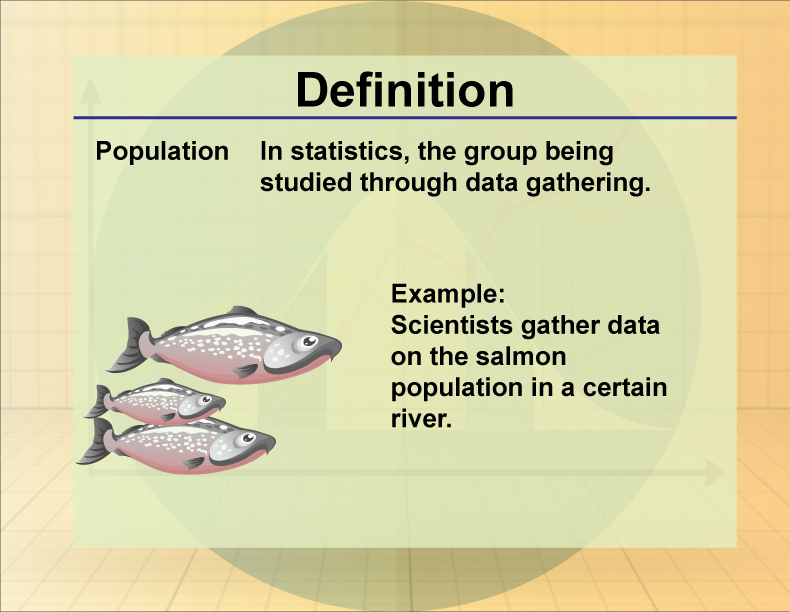
Display Title
Definition--Statistics and Probability Concepts--Population
Display Title
Population

Topic
Statistics and Probability
Definition
A population is the entire group under consideration in a statistical study.
Description
Population is a fundamental concept in statistics, representing the complete set of individuals or items that share a common characteristic. Understanding a population is crucial for statistical analysis as it serves as the basis for sampling and inferential statistics.
In real-world applications, defining the population accurately affects the accuracy of survey results and experimental outcomes. For instance, in public health, studying the population can help devise better health interventions by understanding the demographics affected by a health issue. Furthermore, mathematicians often use population data to calculate probabilities and averages.
Students must grasp the concept of population to perform effective statistical analyses, as it directly influences their results. By identifying the complete population from which a sample is drawn, they can better understand the implications of their findings.

For a complete collection of terms related to Probability and Statistics click on this link: Probability and Statistics Collection.
| Common Core Standards | CCSS.MATH.CONTENT.6.SP.B.4, CCSS.MATH.CONTENT.6.SP.A.2, CCSS.MATH.CONTENT.HSS.ID.A.1, CCSS.MATH.CONTENT.HSS.ID.A.2, CCSS.MATH.CONTENT.HSS.ID.A.3, CCSS.MATH.CONTENT.HSS.ID.A.4 |
|---|---|
| Grade Range | 6 - 12 |
| Curriculum Nodes |
Algebra • Probability and Data Analysis • Data Gathering |
| Copyright Year | 2020 |
| Keywords | statistics |